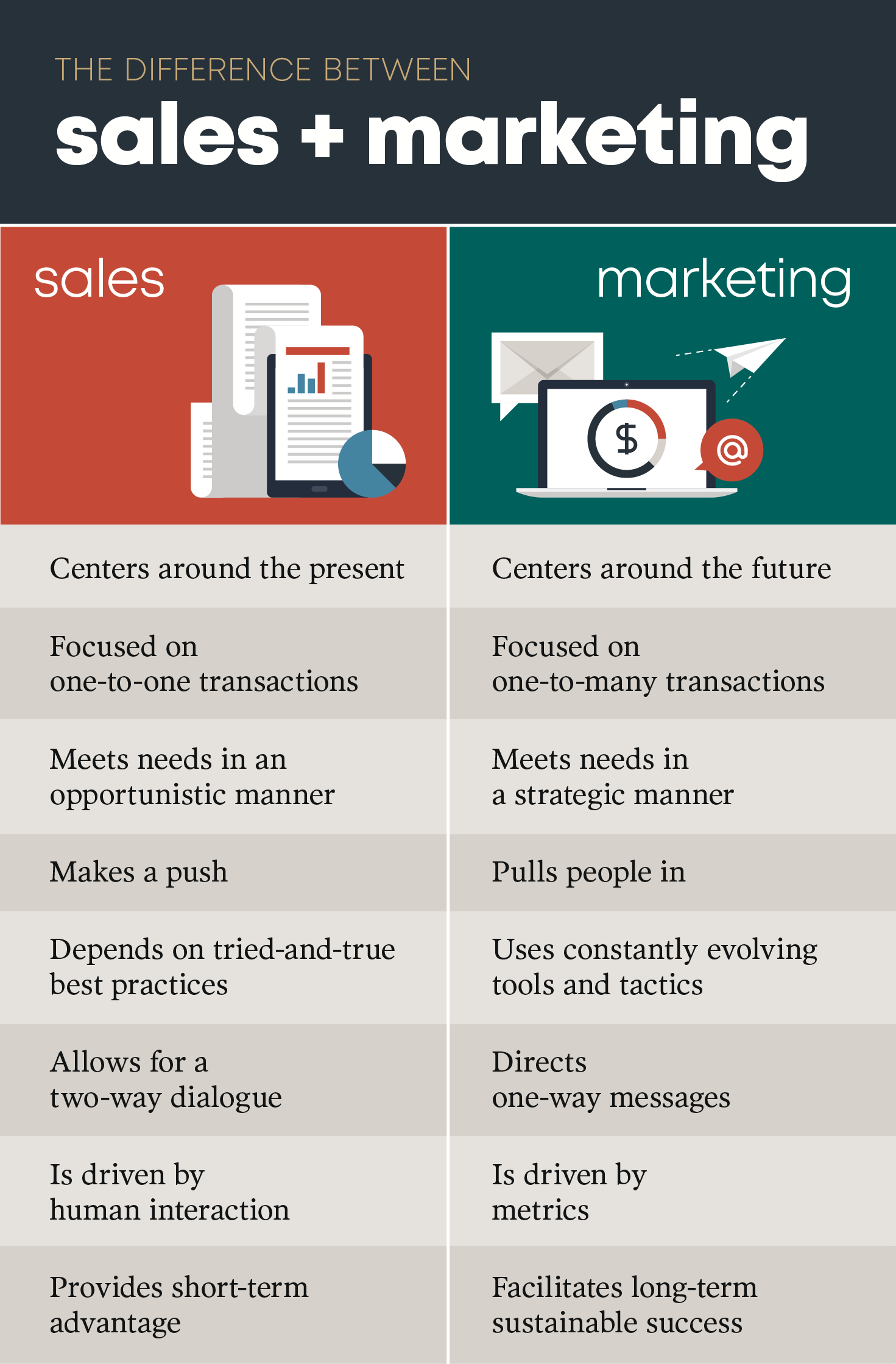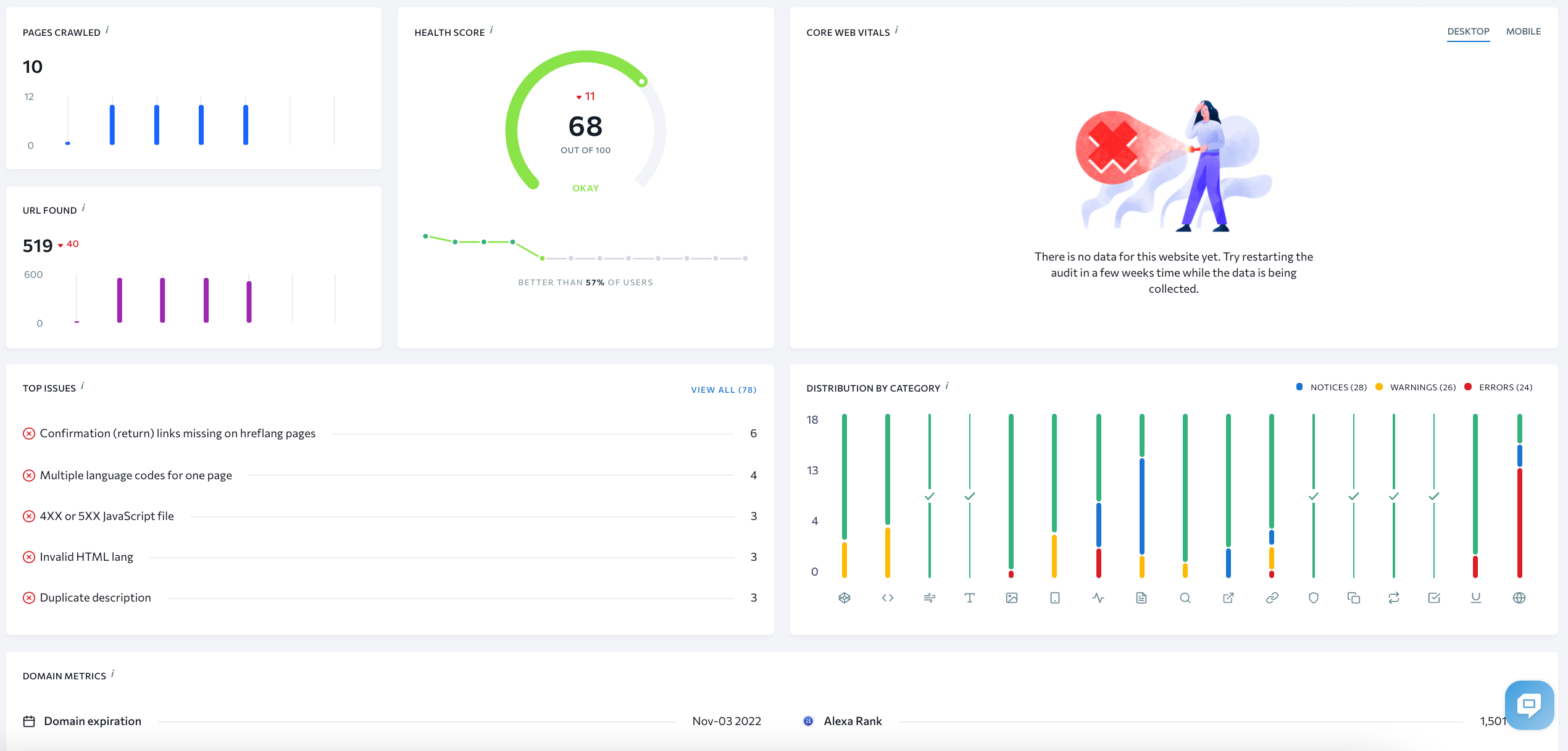Sales and marketing are two forces moving any business ahead, and there’s one thing you can be sure of – when they don’t work together, it is a paved way for serious problems in business.
In the light of the difficult 2020 year and continuing COVID-19 struggles, it seems that aligning sales and marketing is becoming a priority for many companies. A report by InsideView states that 54% of surveyed companies expect that their sales and marketing teams will transition into a single RevOps (Revenue Operations) unit.
Sales and marketing: so similar yet so different
There is a decades-long discussion on how to draw the lines between these departments. Yet, there are still a lot of intersections and blurred areas in what is sales and what is marketing.
A definition, or rather a distinction between the two, is that marketing is a set of efforts that drives interest in what you sell, while sales is about every activity involved in selling to those who became interested.
There is another definition stating that any depersonalized effort like ads, bulk mailings, in-shop ads, etc., is marketing. And when there is a one-on-one contact like a client asking a shop assistant to help choose jeans, or a salesperson calling a client is sales.

And still, there are myriads of possible misunderstandings between the two departments in literally any company.
Just one example – your marketing wants to push sales for product A and keeps it advertised, while salespeople re-orient clients to product B at every given possibility since they’re better motivated to sell product B. And there could be just too many such examples hurting your business.
13 best practices to align your sales and marketing efforts
Like most business areas, both sales and marketing involve agreement and cooperation at strategic and tactical levels. Let’s start with the strategic sales and marketing alignment best practices.
1. Define your customer persona
It can be a great starting point to describe a target customer. This will involve efforts from both marketing and sales teams. Try to answer the following questions:
- Who is your typical customer?
- How old is he or she?
- What is their income level?
- Where does this person work and live?
- What pains do they have that can be solved by the solutions you offer?
Both your sales and marketing departments should have a crystal clear vision of your customer persona, so make sure their understandings do not differ.

2. Define a customer journey
A customer journey is a path the customer takes – from understanding the need for a product to purchasing. Your departments must understand and navigate the customer journey perfectly, each with its own methods. Therefore, both departments must understand the following:
- How your customers look for solutions for their pains – ask friends, read forums, search in Google, etc.
- What words they use to describe their problem.
- What they want to see in the solution.
- Their fears and concerns about potential solutions
- How they compare and choose between different products.
- A step-by-step path that your user goes through from meeting your product to its purchase.
3. Come up with a common message
Consistency in messaging is at the core of sales and marketing alignment. When the above is agreed on by both the marketing and sales departments, you should develop a consistent message to tell the customers via their channels. It is way too often that marketing advertises something while salespeople tell a completely different story.
4. Have common KPIs
One favorite corporate game is blaming each other. The sales department usually complains that the marketing department brings junk leads, and the marketers complain that the salespeople can’t close the deals. Though many KPIs in sales and marketing are different, some of them should be common. Revenue can be a good start. Both teams ultimately work on this. Some other KPIs to consider are the customer lifetime value and customer acquisition costs.
5. Develop marketing assets for every stage of the funnel
Marketing doesn’t end with passing a lead to sales reps or bringing customers to the shop. Salespeople need to know what to tell at every sales stage. And this is the kind of content the marketing department should prepare for them.
6. Think about customer retention and revenue growth
Attracting new customers is always more expensive than upselling to current ones. Marketing should provide sales with “stories” to follow up after a successful sale that can help to upgrade the deal or lead to continuous new orders. At the same time, sales should bring these success stories to the attention of customers.
7. Listen to your customers
Salespeople should carefully listen and pick the pain points their customers are telling, and the marketing team should take that into account. One of the ways to deal with it is to communicate how your product can address these pains. The other way is to modify the product to be a better fit for the needs of customers.
Sales and marketing alignment tactics
When the strategic issues are worked out, the next thing is to build a culture of working together on a tactical level. So we continue with some tips on this below.
8. Have regular joint meetings
It hurts the alignment if marketing and sales teams communicate too seldom. A good start is to have a weekly cross-team meeting to discuss how the sales are going, what marketing campaigns are planned for launch, and what support is needed for sales from marketing.
Another great idea is to have regular brainstorming meetings where both marketing and sales teams can share new insights from customers and ideate how to improve products or communicate product benefits.
9. Create marketing campaigns together
Involve the sales team in planning marketing campaigns. Salespeople often complain about poor marketing campaigns not helping the sales. To bridge that gap, allow the sales team to have a say in marketing campaigns. Of course, the marketing team can still lead on creative work or media buying. But sales reps can bring some valuable point of view, too.
10. Share information
Both marketing and sales departments in your company definitely have a lot of reports or generated studies. Make some of them shareable between teams, so they can better understand how other departments are working.
11. Create content together
Usually, everything related to content creation is attributed to the marketing department. They develop the tone of voice, write website copy and articles, work with designers on banners and other visuals, send newsletters, etc. But you can involve the sales team in the content production as well. They’re the ones who talk most to the actual customers, and their input is very beneficial.
Sometimes there are so many people working on a website and making so many changes every day. It may lead to several unintentional errors. Sales can be severely affected by this.
Therefore, after you or anyone from your team make edits on the site, conduct a website audit to detect critical errors and fix them in time. You can use a dedicated tool for that, SE Ranking, for example. To run a thorough website audit with this tool, all you need is to enter your website address and get reports and notifications about errors found.


12. Let marketing hear the customers
The marketing team is often unaware of the “customers’ voice”. While the marketing department reaches out through surveys and questionnaire, it is crucial to let your marketers listen to how sales calls are going, what customers are telling, etc. It will help better target marketing communication to customers.
13. Rinse and repeat
Remember to get back to strategic issues regularly. Maybe you need to update the customer persona with the new knowledge you acquired about customers. See if the customer journey has changed over time. Examine if other points are starting to matter, which was not the case before.
Recollect all the strategic alignment items mentioned above, review them, and keep doing it regularly as nothing stands still in this world.
Summary
While sales and marketing generally work on the same goals, there is a great divide in how they function and the tools and approaches they use. It is important to keep sales and marketing from warring with each other and instead engage in mutual cooperation. This process is called sales and marketing alignment, and it falls into strategic and tactical mechanisms listed above.
Start implementing them in your company, and you will be surprised how much better the cooperation between sales and marketing will be, ultimately driving revenue and growth forward.
FAQs
Sales and marketing alignment is the process that enables sales and marketing teams to collaborate and work strategically on common business goals. It helps teams deliver effective and result-oriented marketing campaigns, increases the number of qualified leads, boosts sales, and increases revenues.
Sales CRM with Marketing Automation is the best tool to align your sales and marketing teams.
Read further:









